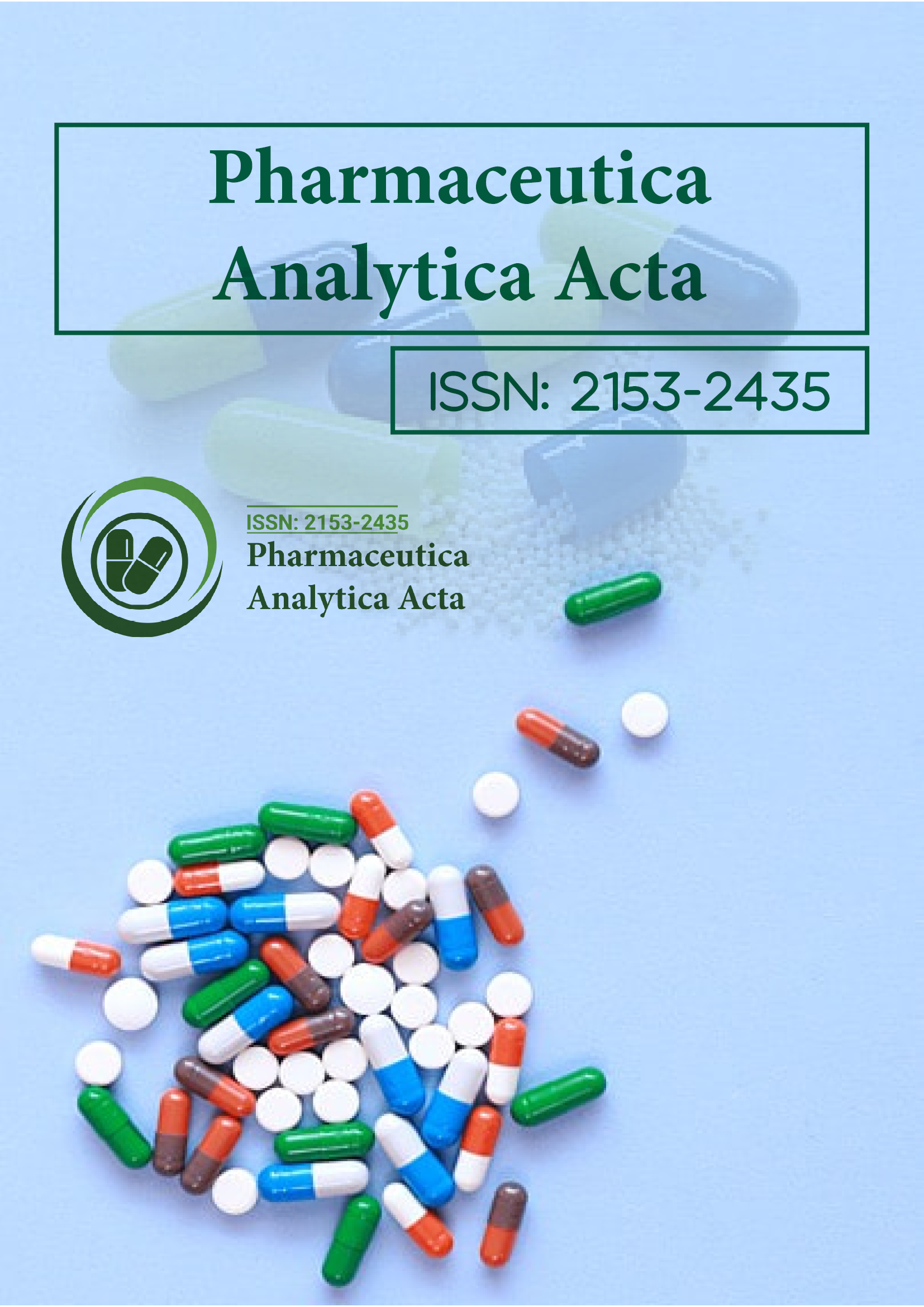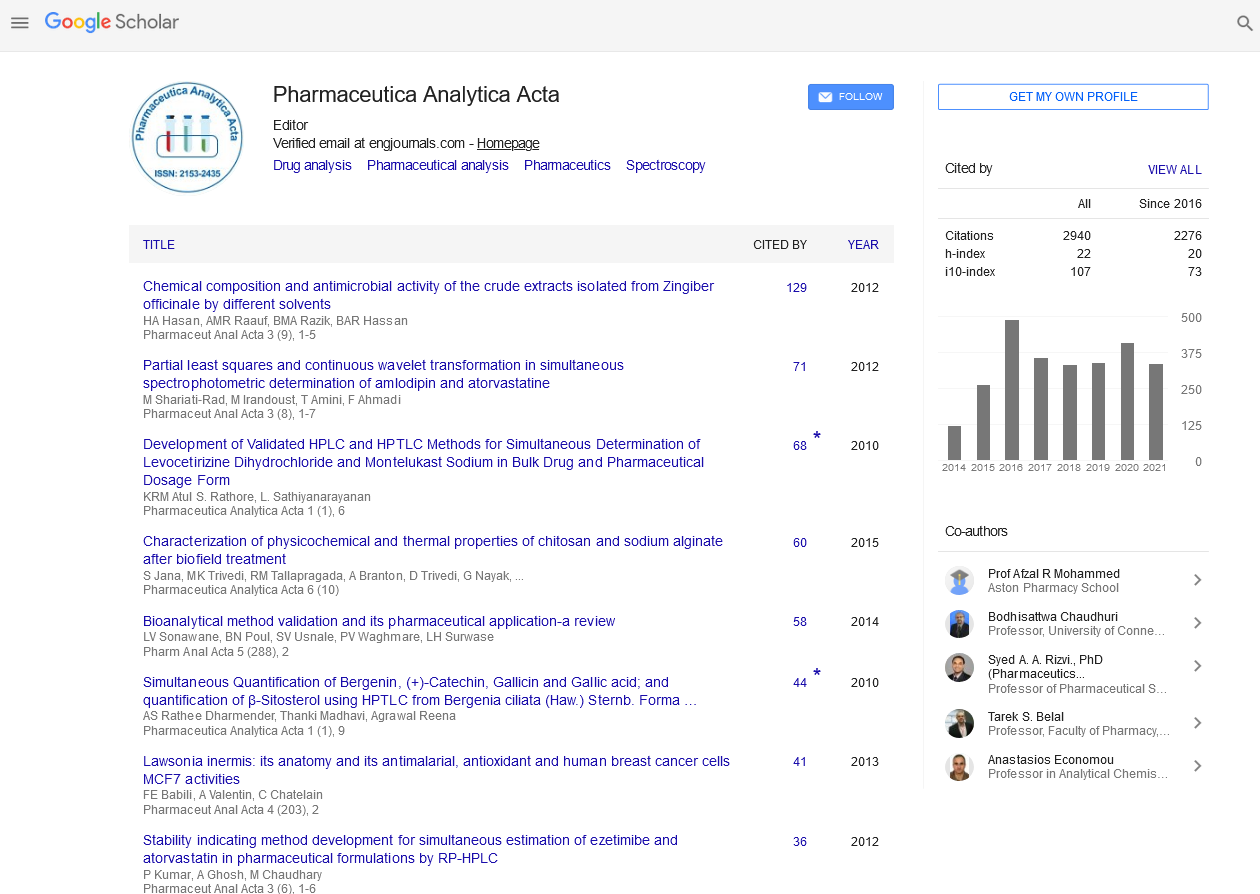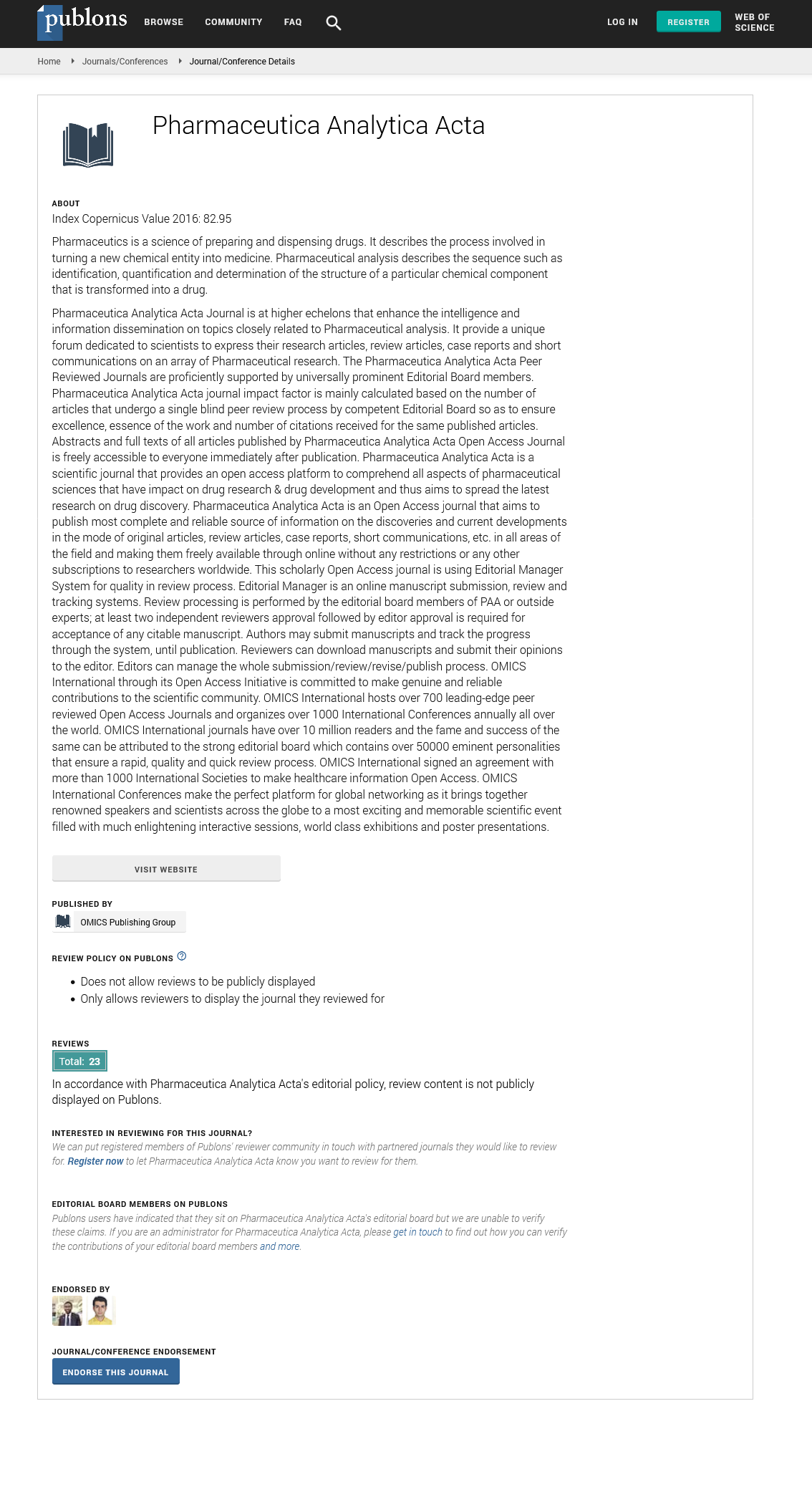Indexed In
- Open J Gate
- Genamics JournalSeek
- Academic Keys
- JournalTOCs
- The Global Impact Factor (GIF)
- China National Knowledge Infrastructure (CNKI)
- Ulrich's Periodicals Directory
- RefSeek
- Hamdard University
- EBSCO A-Z
- OCLC- WorldCat
- Publons
- Geneva Foundation for Medical Education and Research
- Euro Pub
- Google Scholar
Useful Links
Share This Page
Journal Flyer

Open Access Journals
- Agri and Aquaculture
- Biochemistry
- Bioinformatics & Systems Biology
- Business & Management
- Chemistry
- Clinical Sciences
- Engineering
- Food & Nutrition
- General Science
- Genetics & Molecular Biology
- Immunology & Microbiology
- Medical Sciences
- Neuroscience & Psychology
- Nursing & Health Care
- Pharmaceutical Sciences
Short Communication - (2024) Volume 15, Issue 2
Nanomedicine: Minute Technology Making a Big Impact on Drug Delivery and Diagnosis
Yang Xiang*Received: 03-Jun-2024, Manuscript No. PAA-24-26652; Editor assigned: 06-Jun-2024, Pre QC No. PAA-24-26652 (PQ); Reviewed: 20-Jun-2024, QC No. PAA-24-26652; Revised: 24-Jun-2024, Manuscript No. PAA-24-26652 (R); Published: 05-Jul-2024, DOI: 10.35248/2153-2435.24.15.785
Description
Pharmaceutical sciences are being advanced by nanomedicine, the application of nanotechnology to medicine, which provides novel approaches to drug delivery and diagnostics. This developing discipline is improving the accuracy, effectiveness, and customisation of medical treatments by using nanomaterials, which are particles with a size between 1 to 100 nanometres [1-3].
Precision in drug delivery
Conventional drug delivery methods frequently have problems with non-specific distribution, which can cause systemic toxicity and less-than-ideal treatment results. Drug delivery methods that are specifically targeted are how nanomedicine deals with these issues. Therapeutic medicines can be targeted to specific cells or tissues using manufactured nanoparticles. By reducing unintended effects on non-target tissues and minimizing overall systemic exposure in addition to raising medication concentrations at the site of action, this focused approach enhances patient safety and treatment efficacy [4-6].
Conventional chemotherapy treatments, for instance, have severe side effects in oncology because they damage both malignant and healthy cells indiscriminately. Delivery techniques based on nanoparticles are intended to target tumour cells specifically. This reduces toxicity associated with treatment and improves patient outcomes by lessening collateral harm to normal tissues while also increasing the drug's efficacy.
Advancing diagnostic capabilities
By creating sophisticated imaging and biosensing technologies, nanomedicine is also revolutionising diagnostic capacities. When it comes to imaging modalities like Computed Tomography (CT), Magnetic Resonance Imaging (MRI), and ultrasound, nanoparticles can greatly improve contrast. For example, superparamagnetic nanoparticles enhance MRI contrast, making diseased conditions easier to see.
Additionally, certain ligands, antibodies, or biomarkers can be added to nanoparticles to functionalise them and allow for the highly sensitive molecular diagnosis of illnesses. For instance, gold nanoparticles are used in the creation of biosensors that can identify biomarkers linked to diseases including diabetes, cancer, and cardiovascular disorders at low concentrations. These developments make early detection and observation easier, which is essential for efficient illness management and intervention.
The developments in the field of nanomedicine have significant effects on drug delivery and diagnostics. In personalised medicine, the capacity to administer medications with great specificity and minimal side effects is a major advancement. The development of targeted delivery systems is critical for treating complicated diseases such as cancer, since it holds the potential to maximise therapeutic efficacy while minimising damage to healthy tissues [7-9].
The improved biosensing and imaging properties of nanoparticles make it possible to diagnose illnesses early and with greater precision. This may result in prompt treatments and improved acute and chronic illness management. But even with these encouraging advancements, there are still a number of issues that need to be resolved.
Emerging challenges
There are difficulties in using nanomedicine in clinical settings. Comprehensive attention must be paid to matters including the possible toxicity of nanoparticles, the difficulty in obtaining regulatory permission, and the requirement for lengthy clinical trials. It takes continuous research and development to optimise nanoparticle safety profiles and set precise regulatory requirements in order to guarantee the efficacy and safety of nanomedicine products [10].
Extensive acceptance may also be hampered by the high expense of creating and producing nanomedicine products. It will be imperative to address these issues if nanomedicine is to be successfully incorporated into standard clinical practice.
Conclusion
Revolutionary development in pharmaceutical sciences, nanomedicine offers ground-breaking approaches to diagnostics and medication administration. Treatment paradigms could be revolutionised and patient care could be improved by the precision and specificity of systems based on nanoparticles. The field is expected to produce notable advancements in both therapeutic and diagnostic applications as it develops further. Nanomedicine has a bright future ahead of it, since continued research should solve present problems and broaden its uses. Through the utilisation of nanomaterials' distinct characteristics, nanomedicine is poised to significantly contribute to the advancement of personalised medicine and the enhancement of health outcomes. As these developments progress, they have the potential to completely change the field of medicine and healthcare by opening up new avenues for tailored and efficient treatment plans.
References
- Babu A, Templeton AK, Munshi A, Ramesh R. Nanodrug delivery systems: a promising technology for detection, diagnosis, and treatment of cancer. AAPS PharmSciTech. 2014;15:709-721.
[Crossref] [Google Scholar] [PubMed]
- Sahoo SK, Labhasetwar V. Nanotech approaches to drug delivery and imaging. Drug Discov Today. 2003;8(24):1112-1120.
[Crossref] [Google Scholar] [PubMed]
- Freitas Jr RA. The future of nanofabrication and molecular scale devices in nanomedicine. Stud Health Technol Inform. 2002 (pp. 45-59). IOS Press.
[Google Scholar] [PubMed]
- Sahu T, Ratre YK, Chauhan S, Bhaskar LV, Nair MP. Nanotechnology based drug delivery system: Current strategies and emerging therapeutic potential for medical science. Journal of Drug Delivery Science and Technology. 2021;63:102487.
- Wolfram J, Ferrari M. Clinical cancer nanomedicine. Nano Today. 2019;25:85-98.
[Crossref] [Google Scholar] [PubMed]
- Alharbi KK, Al-Sheikh YA. Role and implications of nanodiagnostics in the changing trends of clinical diagnosis. Saudi J Biol Sci. 2014;21(2):109-117.
[Crossref] [Google Scholar] [PubMed]
- Emerich DF, Thanos CG. Targeted nanoparticle-based drug delivery and diagnosis. J Drug Target. 2007;15(3):163-183.
[Crossref] [Google Scholar] [PubMed]
- Vahedifard F, Chakravarthy K. Nanomedicine for COVID-19: The role of nanotechnology in the treatment and diagnosis of COVID-19. Emergent Mater. 2021;4(1):75-99.
[Crossref] [Google Scholar] [PubMed]
- Ho D, Wang CH, Chow EK. Nanodiamonds: the intersection of nanotechnology, drug development, and personalized medicine. Sci Adv. 2015;1(7):e1500439.
[Crossref] [Google Scholar] [PubMed]
- Sahoo SK, Parveen S, Panda JJ. The present and future of nanotechnology in human health care. Nanomedicine. 2017;775-806.
[Crossref] [Google Scholar] [PubMed]
Citation: Xiang Y (2024) Nanomedicine: Minute Technology Making a Big Impact on Drug Delivery and Diagnosis. Pharm Anal Acta. 15:785.
Copyright: © 2024 Xiang Y. This is an open access article distributed under the terms of the Creative Commons Attribution License, which permits unrestricted use, distribution, and reproduction in any medium, provided the original author and source are credited.


